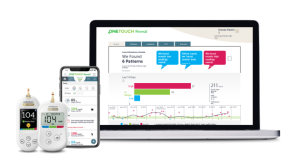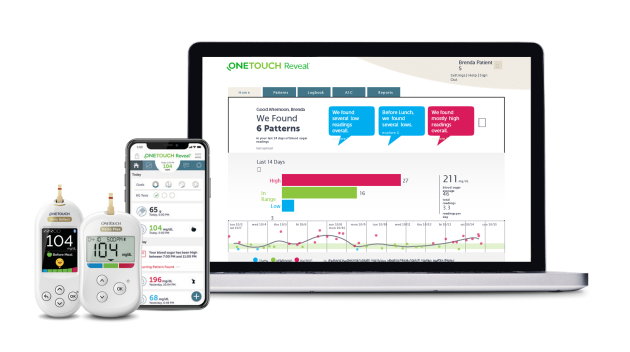 “AI seems to be a thing. Everybody’s excited about ChatGPT.” Asking ChatGPT to list current medical device trends as preparation for our monthly content meeting has turned into our latest group blog.
“AI seems to be a thing. Everybody’s excited about ChatGPT.” Asking ChatGPT to list current medical device trends as preparation for our monthly content meeting has turned into our latest group blog.
Not surprisingly, the StarFish team identified the same trends proposed by ChatGPT- and more – with six of the most interesting trends making it into this blog.
Artificial Intelligence (AI)
AI will influence medtech a lot. Work that’s algorithmic will ultimately go away. The value of engineers will shift to being quite involved in the problem with less work laying out circuit boards and getting papers right on injection molding parts, and more work on understanding what the device is really for. Their focus will shift, but engineers will always be necessary.
AI shifts things from designing an algorithm to designing the data sets to supporting both algorithmic development and also its validation. Those have always been necessary, but the thing needed for AI to succeed is convincing people, including the FDA in particular, that it actually does a specific thing and for that you need real data.
That might actually help make better devices because traditionally, we see people saying I have this great relationship between whatever and whatever, and it’s empirical and I developed it somehow by magic. They don’t necessarily have data to support that, and they don’t recognize that they need it. But with AI it’s all about the data.
Personalized medicine is the Holy Grail of medicine targeted “just for me”. But how do you validate me versus you? That’s another level of complexity to think about because we all wear these devices that track our biometrics, but our physiology is individual. And how do you validate that? It’s working for me versus my neighbor.
A friend started a company with the premise of individual therapy but determined that weight and diet and exercise are the big factors and everything else is a rounding error. And probably 8 hours of sleep is good, plus quitting smoking, and watching alcohol intake. They had no proof before, but now, there’s some data to support that.
UX Impact
AI will impact UX significantly. Not only the experience, but the interaction. New technology based on massive data that is no longer about human machine interaction, but more about human machine collaboration. For example, how to bring big data from the current scenario to help a surgeon make decisions.
From a UX standpoint, AI filters through piles of information. Everybody wants to measure everything about their condition and bring a GB of data to their family doctor for their 10-minute visit. “What do you think about this? Should that be adjusting my blood pressure medication?” A doctor cannot go through the data in 10 minutes.
It’s only a matter of time before AI tools start showing up to filter through and surface the parts of that GB of data that really matter, and in a way that can be trusted.
We’ll start seeing more on the device side as well, where the device does a lot of that analysis. It’s such an interesting regulatory environment or regulatory implication. How do you trust and validate the AI interpretation? What does that even mean?
Connectivity of Devices
Connectivity is all about collecting data and analysing and acting on it in a timely manner. Can a patient’s health be tracked within the hospital, and then when they want to go home? Can we send them home faster? Do we have faith in the data that’s being transmitted, can we Interact with them quickly enough if something goes sideways?
Perhaps they are. Standards are coalescent. At least the ecosystem of companies that we deal with are sort of coalescing. Many players in the space that didn’t used to work together now have to work together.
The benefits of using connected devices and BYOD in medical devices are numerous. For patients, these technologies can provide personalized and remote healthcare, allowing them to monitor their health and well-being from anywhere at any time. This approach can also reduce the need for in-person appointments and facility.
For healthcare providers, connected devices and BYOD can provide real-time access to patient data, allowing for more accurate diagnoses and personalized treatment plans. Additionally, this approach can reduce the workload on healthcare providers by allowing patients to monitor their own health and report back to their healthcare provider as necessary.
In recent years, the use of connected devices and bring-your-own-device (BYOD) policies has become increasingly prevalent in the healthcare industry, with more and more devices being designed to work in tandem with connected devices and the use of personal mobile devices.
For example, Clarius is an ultrasound company. They supply the ultrasound part, but the display, analysis and computational crunching all resides on the clinician’s own device.
More smartphone incorporation either through apps or devices that interface with them or, particularly with early-stage devices, using a lot of their capabilities as the camera, the computer and incorporating that into POCs or early prototypes. Bring your own device. We’re definitely seeing some of that both on the patient side and the clinician side.

The OneTouch Reveal® mobile app automatically notifies you of repeated highs or lows blood sugar levels so you can take action to avoid them in the future.
Wellness will always be pushing closer and closer to the medical devices realm as we are wearing more and more things now that are getting closer and closer to having medical uses. The Google Wear OS has broadly pushed out fall detection. My watch has some medical grade sensing capabilities.
So far, we’ve discussed at least two trends that the AI chatbot identified. Time for three more:
Minimally Invasive
All minimally invasive approaches try to get people out of ICU faster. ICU beds are $4000 a day or so. And hospitals still lose money on some of the patients. We see all sorts of minimally invasive projects and their value proposition is all about reducing days in ICU.
Patient Centric Design
Patient-centered design is an approach to healthcare that prioritizes the needs and preferences of patients. It involves designing healthcare systems, processes, and facilities with the goal of providing better care for patients. The concept of patient-centered design has gained increasing importance in recent years as healthcare systems worldwide seek to improve the quality of care they provide.
The principles of patient-centered design are centered on the patient’s needs and values. Healthcare providers must engage patients as partners in their care and work collaboratively to develop a treatment plan that is tailored to the patient’s unique circumstances. Patients must be empowered to make informed decisions about their care and have access to the resources they need to manage their health effectively.
One key aspect of the patient-centered design is the focus on the patient’s experience. Healthcare providers must consider the patient’s care experience from the moment they enter the healthcare facility to the moment they leave. This includes designing facilities that are welcoming and comfortable, providing clear and timely communication with patients, and minimizing wait times and other sources of frustration.

James Cancer Hospital in Ohio.
The James Cancer Hospital in Ohio is an example of a well-planned and executed project in which patient-centered design was a central component of the facility’s redesign. The hospital was designed with the goal of providing a more comfortable and welcoming environment for patients and their families. The facility was designed with input from patients, families, and healthcare providers to ensure that it met the needs of all stakeholders.
To be fair, Medtech should have been thinking about patient centric design all along. Designing something for the purpose it was meant to be used is not a trend, it’s a must. The FDA has had a guidance on it for quite a long time now. It’s only suddenly bubbling to the surface.
We’ve done a ton of patient centric design in our 24 years. It boils down to how do you get something from needing an instruction manual into being just obvious as inherent in the design? Especially anything that needs to fit to someone. We spend a ton of effort trying to make a thing that fits to anybody’s hand, that is easy for the user to apply and not mess up in order to preserve the signal. It’s a requirement we take into account for any project.
Patient centric design mitigates the risk due to use error and usability in general. How can we affect efficacy? How can we potentially protect from harm? These are purely to do with ergonomics use and the human side of it.
Pigmentation is a patient centric design element that’s coming up in the literature a lot these days. In one case a medical device company had to take another spin of their whole patient interface in order to not be affected by pigmentation. They’re collecting data to make sure that the device does not have a an accidentally biased data set.
An interesting example of designing for yourself and regional variances comes from the video game industry. A lot of game designers in Japan design for the average Japanese person. When a game comes over to North America it is often a bit too small or right at the limit of the head, wrist and arm size.
Impact of Surface Disinfection, Hand Sanitizers and Sterilization Protocols
The general indiscriminate use of broad spectrum surface disinfection, hand sanitizers and sterilization protocols to prevent potential community spread of viral particles have become the norm in everyday life. This will almost certainly have far reaching, unintended consequences on our microbiomes and, by extension our health and well being.
Research and development into technologies that will enable research and diagnostic monitoring of microbiome constituents and health (such as minimally invasive autonomous AI enabled and/or internet connected ingestible diagnostics or other non-invasive microbiome sampling systems) will become an area of investment and expansion in the coming years.
The development of these advanced diagnostic tools will lead to eventual increased understanding of the microbiome and corresponding improved treatment therapies such as fecal microbiota transplantation (FMT or fecal transplantation) to restore our Microbiome in the wake of a post CoVID-19 warfare.
AI, UX, Connectivity, Minimally Invasive, Patient Centric Design and Impact of Disinfection and Sanitizing Protocols were our top trends. Which trends are impacting your medical device project? We’d love to hear from readers and discuss your current and upcoming projects.
Title Image: OneTouch Reveal®
Second Image: James Cancer Hospital, Ohio
Astero StarFish is the attributed author of StarFish Medical team blogs. We value teamwork and collaboration on all of our medical device development projects.
[embedded content]
- SEO Powered Content & PR Distribution. Get Amplified Today.
- PlatoAiStream. Web3 Data Intelligence. Knowledge Amplified. Access Here.
- Minting the Future w Adryenn Ashley. Access Here.
- Buy and Sell Shares in PRE-IPO Companies with PREIPO®. Access Here.
- Source: https://starfishmedical.com/blog/unpacking-the-potential-of-6-medtech-trends/



